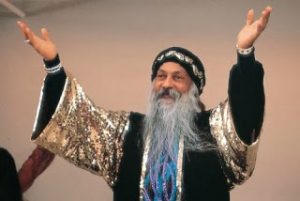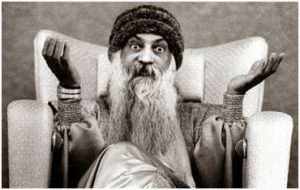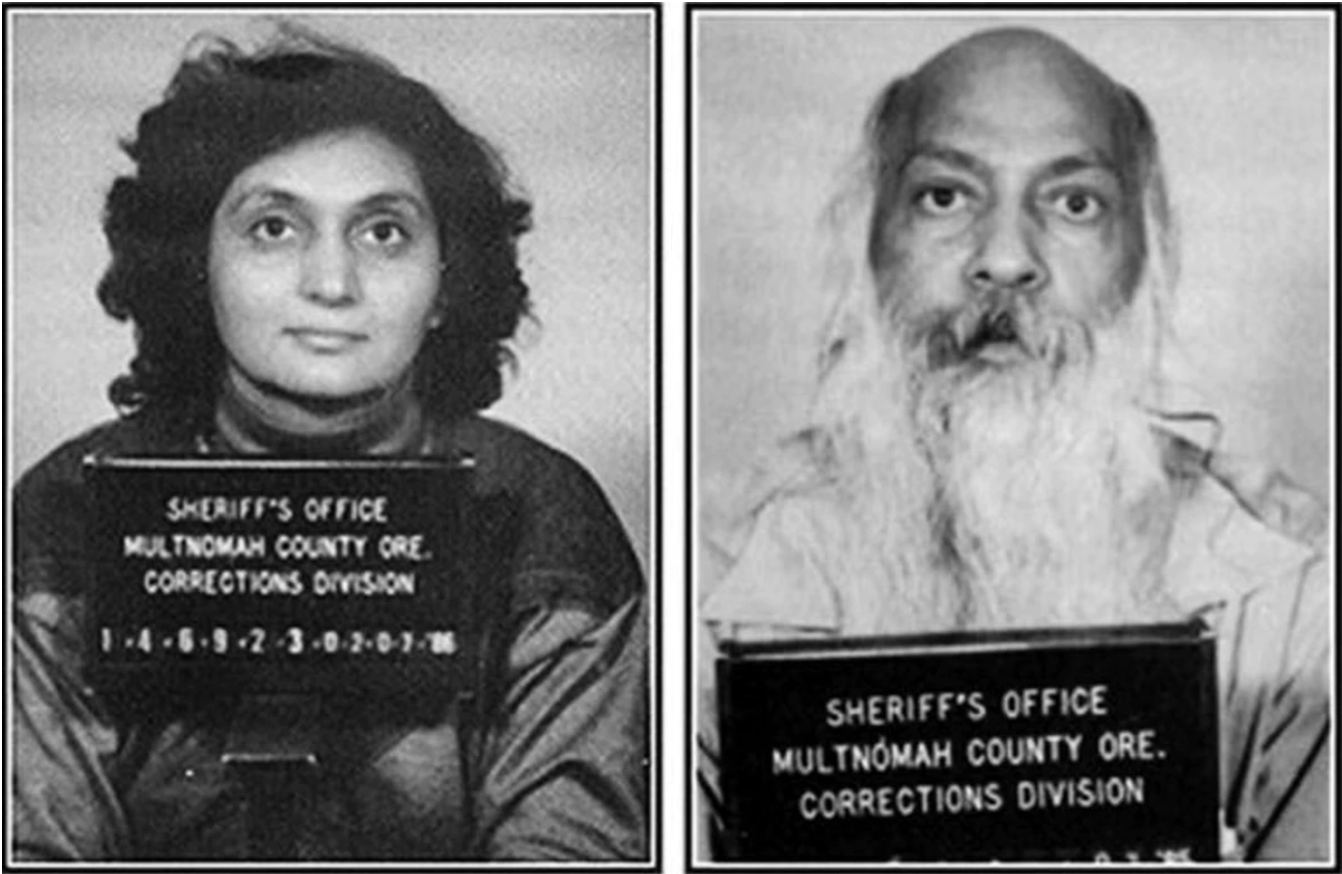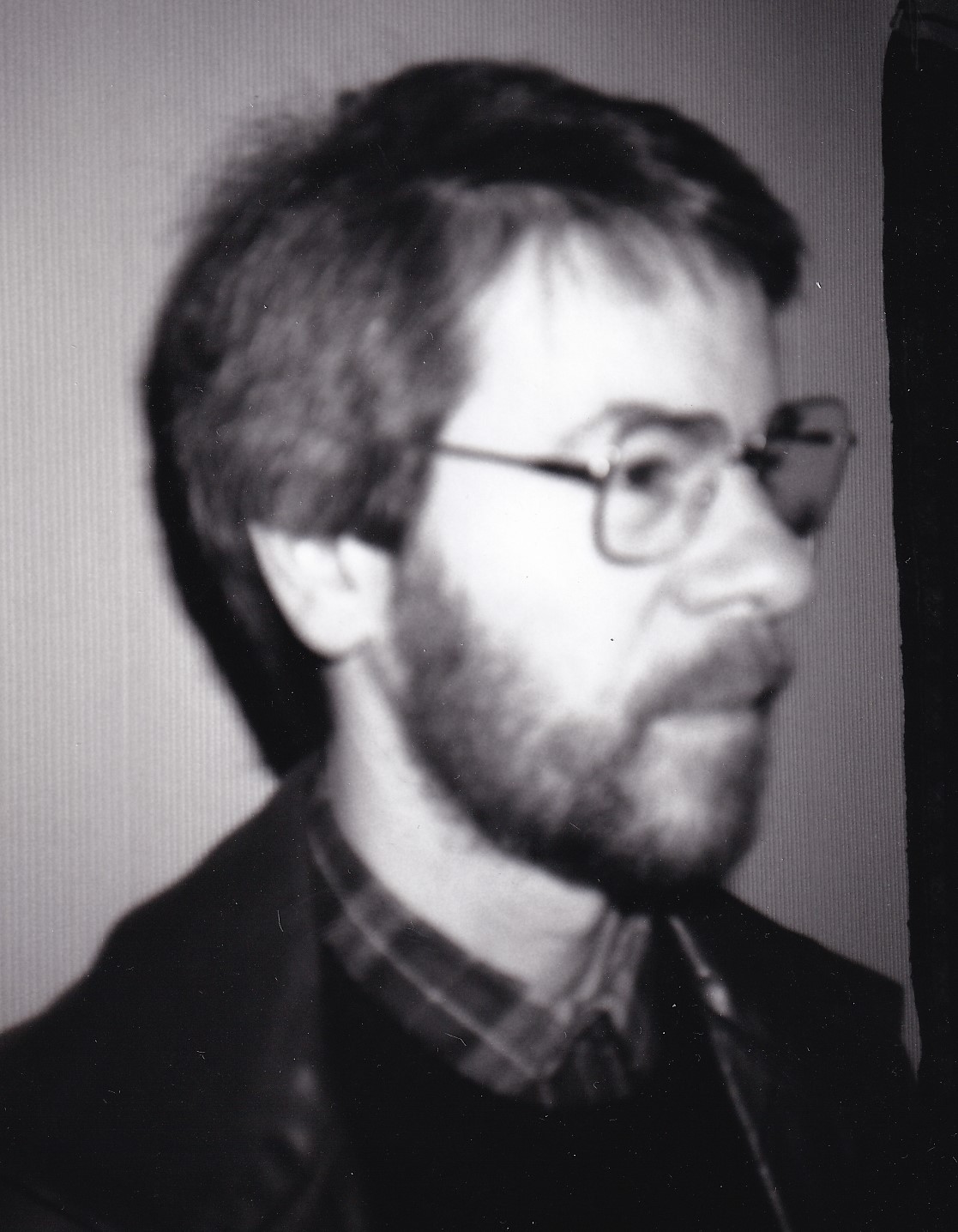Bhagwan Shree Rajneesh
Bhagwan Shree Rajneesh (1931-90) moved from Poona (Pune) to New Jersey in 1981. There he alienated one of his close devotees, Maria Grazia Mori (Deeksha). This woman concluded that he was not enlightened. Amongst other matters, she was disillusioned to find that he talked for hours about his desire to purchase Rolls Royce cars. Deeksha also relayed that Rajneesh ingested a lot of valium and was frequently almost incoherent (Conway, Enigmatic Bhagwan).
The guru afterwards moved on to Oregon, where an expensive 64,000 acre ranch was purchased that same year to accommodate the commune. Here Rajneesh demonstrated his opulent lifestyle via the expensive Rolls Royce automobiles that he regularly acquired; the total number in his collection eventually exceeded ninety.
Rajneesh became known as the Rolls Royce guru. Partisans have employed an argument that, via these acquisitions, he was intending to “make a joke out of American consumerism.” This theme does not always find ready agreement. Critics rejoin that Rajneesh made a joke out of the Oregon commune, which was bankrupted by his excesses.
Rajneesh later claimed that the cars were presents from people all over the world; he said that he had gifted these vehicles to the commune, so he was not their owner. This version has been considered misleading. The cars were purchased, at his insistent and continual request, by the management from the commune fund; he was intending to acquire the largest fleet of Rolls Royces in the world.
About two thousand neo-sannyasins lived at the Oregon commune, many giving all their money to the project. The ranch was transformed into a colony, and much hard work was done. The inmates even created an airstrip. Rajneesh did not discourse, instead withdrawing into a private lifestyle of “public silence” until November 1984. Living in a guarded compound, he had little contact with his followers. Rajneesh did not participate in the manual work incumbent upon the commune. Sleeping 9-10 hours a day, he spent three hours daily in his luxury bathroom. The only time that most of the other residents saw him was during his daily drive in a Rolls Royce.
On most days he watched videos. Ex-devotee Christopher Calder complains that while the workers were often obliged to labour twelve hours a day in the cold, the guru used “his private heated indoor [swimming] pool and watched countless movies on his big screen projection television, all the while enjoying his daily supply of drugs” (Calder, Lost Truth).
Rajneesh had become dependent upon the anxiety drug valium (diazepam); even on the lower estimate of 60 milligrams daily, he exceeded the maximum recommended dosage by 50 percent. Some sources report that he used nitrous oxide (laughing gas) for recreational purposes, and not merely to relieve his asthma. Calder describes the guru as a drug addict. Partisans contested this accusation, affirming that the gas was only used during “dental sessions.”
The lengthy published account of Ma Anand Sheela, for long obscured until 2012, confirms the drug problem. The manager of Rajneeshpuram here says that the British commune doctor (Swami Devaraj) had created “fifteen fictitious medical files” for the purpose of prescribing, ordering, and storing the drugs for Rajneesh. Furthermore, the guru routinely received a combination of two drugs. The spurious medical files enabled him to ingest large quantities of meprobamate (a sedative that became an issue due to serious side effects). The guru’s extensive drug problem was made more dramatic by his resort to nitrous oxide “for two hours every morning and afternoon.”
The Oregon commune was known as Rajneeshpuram. The inmates were desiring to create a city. This prospect met with local resistance. The work force deferred to an increasingly dictatorial management led by Ma Anand Sheela (born 1949), an Indian woman who had married a wealthy American; she had been a neo-sannyasin follower of Rajneesh since 1972. Sheela, who had become the secretary of Rajneesh, now acted as the commune manager.
The Rajneeshi mood became militant. In 1982, Sheela took over the neighbouring village of Antelope, instructing Rajneeshis to reside there. Sheela’s militant campaign set fire to the Wasco County planning office. She was supported by an administrative group of women within the commune, including the Australian Jane Stork (alias Ma Shanti Bhadra). They contrived murder plots, designed to eliminate the Oregon attorney Charles Turner and other persons. The bizarre commune events were reported in some detail (Sheela and Rajneeshi Terrorism).
Sheela and her associates had their own private laboratory, the means by which they mounted a bioterrorist attack at ten salad bars in Wasco County. They deployed salmonella bacteria. Over seven hundred people became ill. This event (September 1984) caused a widespread wave of shock. The commune terrorists also experimented with a typhoid virus for use against nearby towns. These aberrations have been viewed as the outcome of Rajneesh therapy, in which no criteria existed to detect anomalies.
An additionally sinister detail is that Diane Onang (Ma Anand Puja), director of the Rajneesh Medical Corporation, attempted to make the AIDS virus into a germ weapon at her “biological warfare” lab (McCormack 2010:5). This prospect was apparently envisaged for both dissidents and outsider enemies.
Partisan interpretations have frequently attempted to make Rajneesh look guiltless. The court testimony, of the Rajneeshi conspirator Ava Avalos, is revealing. She relays that in 1985, Sheela went to the guru for assistance, to harden the resolve of colleagues who were faltering in the various plans for murder. The response of Rajneesh was tape-recorded. He conveyed:
It was going to be necessary to kill people to stay in Oregon. And actually Hitler was a great man, although he [Rajneesh] could not say that publicly because nobody would understand that. Hitler had great vision.
This was known as the Hitler tape. Les Zaitz clarifies that, although the tape quality was poor, the commune elite “heard Rajneesh say that if 10,000 had to die to save one enlightened master, so be it” (Zaitz, 2011 update of The Oregonian reports, Pt 5, Utopian dreams collapse). In other words, Sheela was endorsed to the hilt. The fascist auspices are difficult to ignore.
Certain more general statements of Rajneesh are not impressive. For instance: “Right and wrong have never been my consideration. What I happen to like is right” (cited in Clarke 1999:70). More specific to the American situation is his statement to a newspaper reporter in 1985, when the Oregon commune was starting to fall apart: “Our people [Rajneeshi neo-sannyasins] can also hijack American planes if worst comes to worst” (Clarke 1999:64).
The murder plots miscarried. In September 1985, Sheela, Diane Onang, and others fled to Europe. Rajneesh denounced them and claimed innocence. He blamed all the commune crimes and problems on Sheela. A month before Sheela fled, he had made a public reference worded as: “I told her [Sheela] to go out and cut as many heads as possible” (Calder, Lost Truth).
Sheela and Rajneesh, police mugshots, Oregon 1985
Sheela was awarded three twenty year jail sentences on charges of assault and attempted murder, with immigration fraud another complication. She was released, in 1988, on account of good behaviour in a California jail. The State of Oregon intended to charge Sheela and Onang with further crimes, but were caught off guard by the lenient early release; the two women left for Europe before any further complication (Morantz, Escape from Rajneeshpuram). Other commune conspirators were subsequently jailed.
According to Sheela’s published account (Don’t Kill Him, 2012), she fled to Europe after resigning from the guru’s service. She had discovered the extent of his drug problem, also that Rajneesh was indifferent to questions about this matter, which he evaded. His insatiable demands for more automobiles and expensive wristwatches were deemed “madness” by Sheela and other neo-sannyasin officials. Sheela says that the subsequent accusations Rajneesh made against her were false. She relays that his reactions to followers who left him were always severe. The European branches of the Rajneesh movement provided a crucial economic support. However, the guru’s expenditure was ruinous and bankrupted the commune.
In October 1985, Rajneesh was briefly jailed and afterwards pleaded guilty to immigration fraud; he was fined and deported from America. He was subsequently refused entry to over twenty countries because of his controversial reputation and ongoing belligerence.
The Oregon commune collapsed in 1985. The Rajneeshi corporations were bankrupt, and the ranch was afterwards sold off. At large, there are said to have been many disillusioned neo-sannyasins who left the sect. However, Rajneesh still had thousands of Western followers, a fair number of whom were alternative therapists.
 Bhagwan Shree Rajneesh (Osho)
Bhagwan Shree Rajneesh (Osho)Rajneesh ended up in Poona for the last few years of his life, resuming a flamboyant role as a guru, wearing flashy jewellery and exotic robes. Donations continued, and he gained more young neo-sannyasins. His discourses continued to be published. Devotees said that he was a great omniscient spiritual master. Critics said that he was a showman. Ex-devotee Christopher Calder, who last visited the ashram in 1988, affirms that Rajneesh was “suffering from drug and illness induced dementia.”
In 1987, the guru proffered a new explanation for his poor health, saying that Christians in the US government had poisoned him during his brief phase spent in American jails. This belief was derived from one of his doctors, a neo-sannyasin. There were various speculations on this matter, including a theory about thallium and radiation which found favour with the guru and his ashram.
Ex-devotee Calder repudiated the explanation as being “entirely fictional and contradicted by undeniable fact.” Calder concluded that negative health symptoms of Rajneesh were caused by Chronic Fatigue Syndrome and aggravated by nitrous oxide poisoning and heavy use of valium (Calder, Lost Truth).
In 1988, the discourses of Rajneesh were preoccupied with Zen; these reflections have been considered heavily coloured by his own views. Rajneesh now adopted the name of Osho. The word osho is a Buddhist title for a temple priest in Japan, and also evocative of Zen teachers. The guru had apparently mentioned the word in this context, also associating the same word with a healing quality and the “oceanic experience” suggested by William James. The ashram staff declared that the name Osho derived from a Japanese term. Rajneesh was evidently trying to move away from his tarnished “Bhagwan” image. The title of Bhagwan was significantly dropped. His followers thereafter called him Osho.
The failing health of Rajneesh (alias Osho) caused him to stop giving discourses in 1989. He died of heart failure in January 1990. His followers continued to spread the misleading belief that he was poisoned by the American government in 1985.
Bibliography:
Many books on the subject are partisan or apologist works, e.g., Vasant Joshi, The Awakened One (1982) and Joshi, Osho: The Luminous Rebel – Story of a Maverick Mystic (2010). Joshi is also known as Swami Satya Vedant, the name bestowed upon him by Rajneesh when he became a neo-sannyasin. Reservations also apply to certain works of a different complexion. For instance, The Golden Guru (1987), by James S. Gordon, has received strong critique, e.g., the 2002 letter from E. Patrick Curry in the Washington Post. Critics regard as questionable the Autobiography of a Spiritually Incorrect Mystic (New York 2001), an edited work representing Rajneesh. A brief but very critical treatment is Ronald O. Clarke, The Narcissistic Guru: A Profile of Bhagwan Shree Rajneesh (1988). An Emeritus Professor here examines the prolific claims of the subject, and associates him with a narcissistic personality disorder. Despite his excesses, “Rajneesh claims possession of absolute and total spiritual truth.” The quote comes from page 59 of the reprint in Harry Aveling, ed., Osho Rajneesh and his Disciples: Some Western Perceptions (Delhi: Motilal Banarsidass, 1999), chapter 4, pp. 55-89. A relevant account is Ma Anand Sheela, Don’t Kill Him: The Story of my Life with Bhagwan Rajneesh (New Delhi: Prakash, 2012).
Some other varied works can be listed as follows: Lewis F. Carter, Charisma and Control in Rajneeshpuram (Cambridge University Press, 1990); Satya Bharti Franklin, The Promise of Paradise: A Woman’s Intimate Story of the Perils of Life with Rajneesh (Barrytown: Station Hill Press, 1992); Tim Guest, My Life in Orange: Growing Up with the Guru (Orlando, Florida: Harcourt, 2004); Hugh Milne, Bhagwan: The God That Failed (London: Caliban, 1986); Win McCormack, ed., The Rajneesh Chronicles (1987; second edn, Portland, Oregon: Tin House Books, 2010); Jane Stork, Breaking the Spell: My Life as a Rajneeshee and the Long Journey Back to Freedom (Sydney: Pan Macmillan, 2009); Antony Storr, Feet of Clay: A Study of Gurus (London: Harper Collins, 1996); Kate Strelley, The Ultimate Game: The Rise and Fall of Bhagwan Shree Rajneesh (London: Harper Collins, 1987). My own critical view is expressed in Some Philosophical Critiques and Appraisals (Dorchester: Citizen Initiative, 2004), pp. 58-74.
Kevin R. D. Shepherd
ENTRY no. 58
Copyright © 2014 Kevin R. D. Shepherd. All Rights Reserved.


 Bhagwan Shree Rajneesh (Osho)
Bhagwan Shree Rajneesh (Osho)
